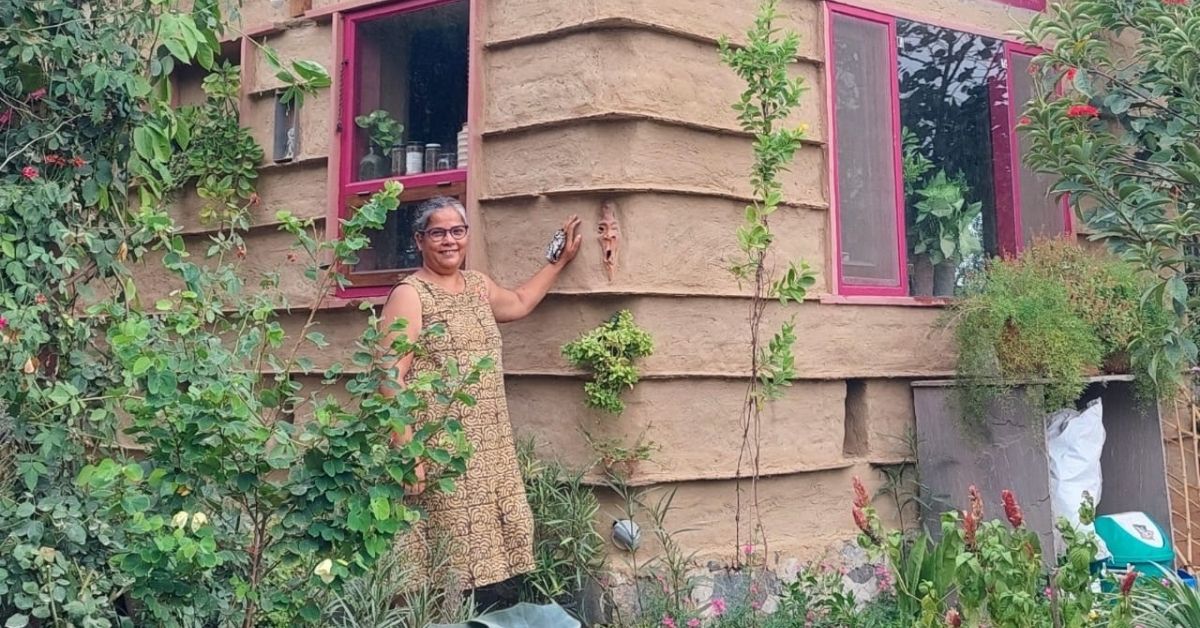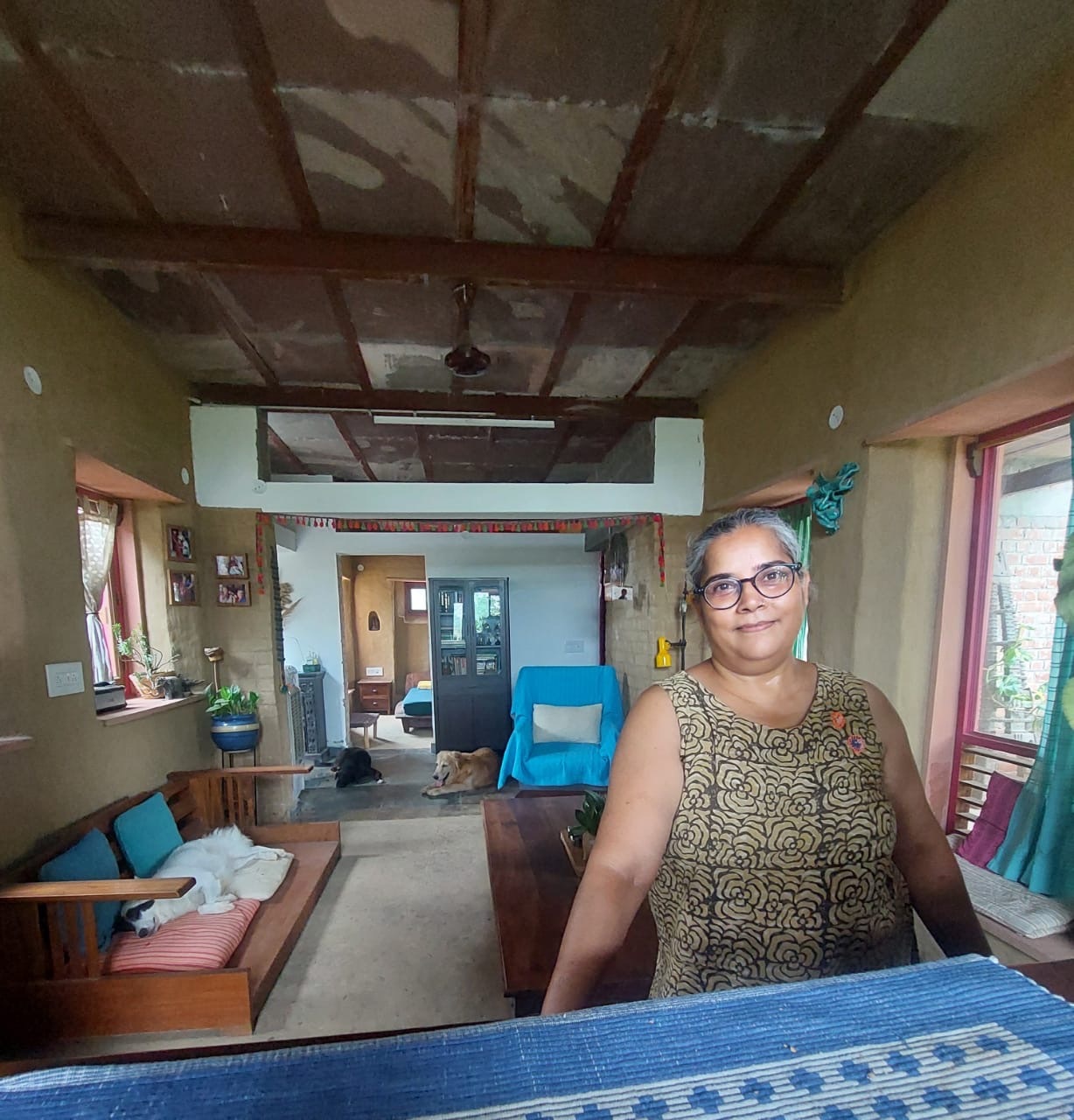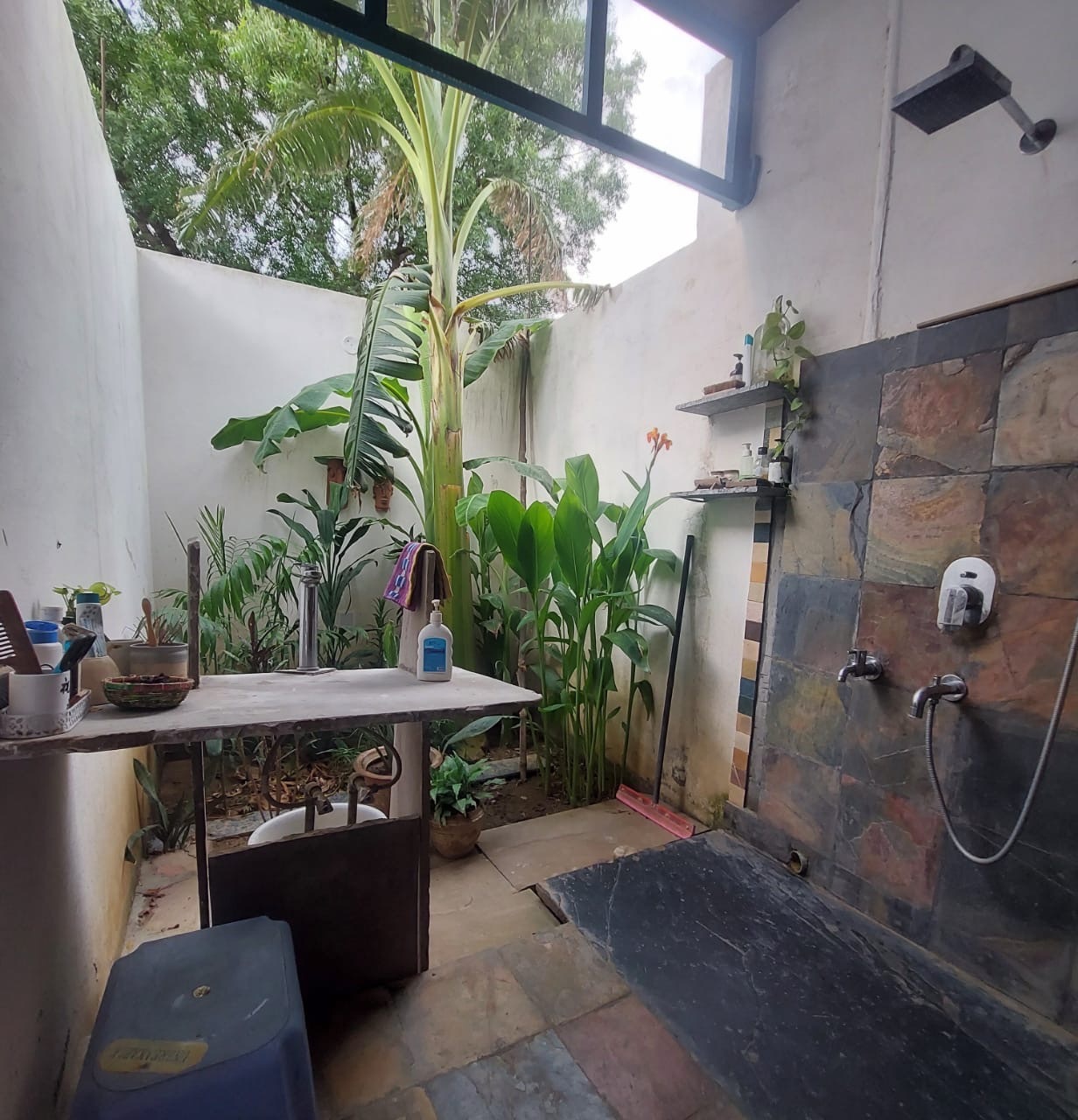Unique Mud Home Has No ACs, Water-less Toilets & Banana Trees in Bathrooms
Veena Lal from Faridabad has built a unique sustainable home - using mud, stone and wood. The eco-friendly house uses no ACs and the toilets use no additional water.

In 2003, Veena Lal (54), a resident of Faridabad, purchased empty land to construct her dream home. Before this, she had been living in a rented apartment, but wanted to avoid living in a concrete structure that was not sustainable, she says.
Regardless, even in the apartment, she led a sustainable life, generating less waste and recycling whatever was possible. “However, I wanted to do something more for the environment,” Veena, who runs an NGO named Karma Marg that works with children, tells The Better India.
Finally, three years ago, she was able to save enough money and began constructing her eco-friendly home with the help of a young Mumbai-based architect named Amol Mannekar.

“Today, in my 1,800 sq ft mud home, there is very minimal use of cement, as well as no tiles, air conditioners, or even water connections that lead to wastage,” says Veena.
Eco-friendly floors, walls, and ceilings
With the sole purpose of constructing a green home, Veena turned towards traditional practices.
“The outer structure of the building has been raised using sun-baked bricks that are plastered with mud. This provides an added layer of insulation to the house and keeps it cool at all times. In turn, there is no need for air conditioning and my usage of fans is also minimal,” says Veena, adding that the bricks were made at the house site using clay from her backyard. However, to construct the stairs, used regular bricks, which were held together by cement.

Meanwhile, the roof has been lined with locally-made red clay tiles and the flooring has been done with large stones found in surrounding areas of her home. Even washbasins and kitchen sinks were made using stone, while window and door frames were made by repurposing wood.
“As an extra element and to live in harmony with nature, I requested Amol to construct curved, hollow spaces on the outer walls of the house, so that birds can use them as nesting spaces or to take shelter from the rain. Since it is made of mud, if the weather is too hot, they can cool down there as well,” says Veena. To ensure that the birds can feel safe, she is growing creeper plants that will act as a protective covering.
Sustainable toilet and bathroom
The home consists of one floor and a terrace. There are two bedrooms, a drawing room, kitchen, bathroom, and a separate dry toilet.
“It is common practice among traditional homes to not have a toilet attached to the house. I did the same. It is placed beside the house and there is no concept of a flush. It is a dry toilet that collects all the excreta in a drum. By adding some additional elements such as cow dung into the drum, all the contents are turned into nutritional compost for my vegetable garden within six months,” she says.
Veena has two drums that she alternates between, and says that it has never been a hassle for her to clean its contents. However there is one water source in the toilet that she uses for cleaning up.
The bathroom, on the other hand, is situated within the house. It has an open structure so that during the day, which is when Veena usually bathes, there is no need for light. To ensure there is no wastage of water, the architect has constructed space to plant trees that purify the water and improve the groundwater level.

“I planted banana trees in that space as their roots are well-known to cleanse water. I use only homemade bio enzymes as body soap, but sometimes when there are guests at home, I offer them soap. The soapy water does not affect plants because it is filtered by the roots,” says Veena.
“My NGO is also located beside my home, and that building is fully powered by solar energy. After constructing my home, I integrated the system of both buildings. I power all the amenities using solar power,” says Veena.
Earlier, electricity powered by the grid would give her monthly bills of Rs 10,000 or more. Now, she pays only Rs 3,000 or 4,000.
Not only has her electricity and water bill reduced, Veena says there has been a tremendous change in her lifestyle. She uses a solar cooker to make daily sabzis and dal, and even grows vegetables and fruits in the backyard for daily consumption.
“In this kind of a sustainable lifestyle, the mindset should be such that there is no craving for particular fruits or vegetables. I consume only what is grown in the garden and do not over consume. A home is for shelter and living, and not for luxury,” says Veena.
If you found our stories insightful, informative, or even just enjoyable, we invite you to consider making a voluntary payment to support the work we do at The Better India. Your contribution helps us continue producing quality content that educates, inspires, and drives positive change.
Choose one of the payment options below for your contribution-
By paying for the stories you value, you directly contribute to sustaining our efforts focused on making a difference in the world. Together, let’s ensure that impactful stories continue to be told and shared, enriching lives and communities alike.
Thank you for your support. Here are some frequently asked questions you might find helpful to know why you are contributing?


This story made me
-
97
-
121
-
89
-
167











